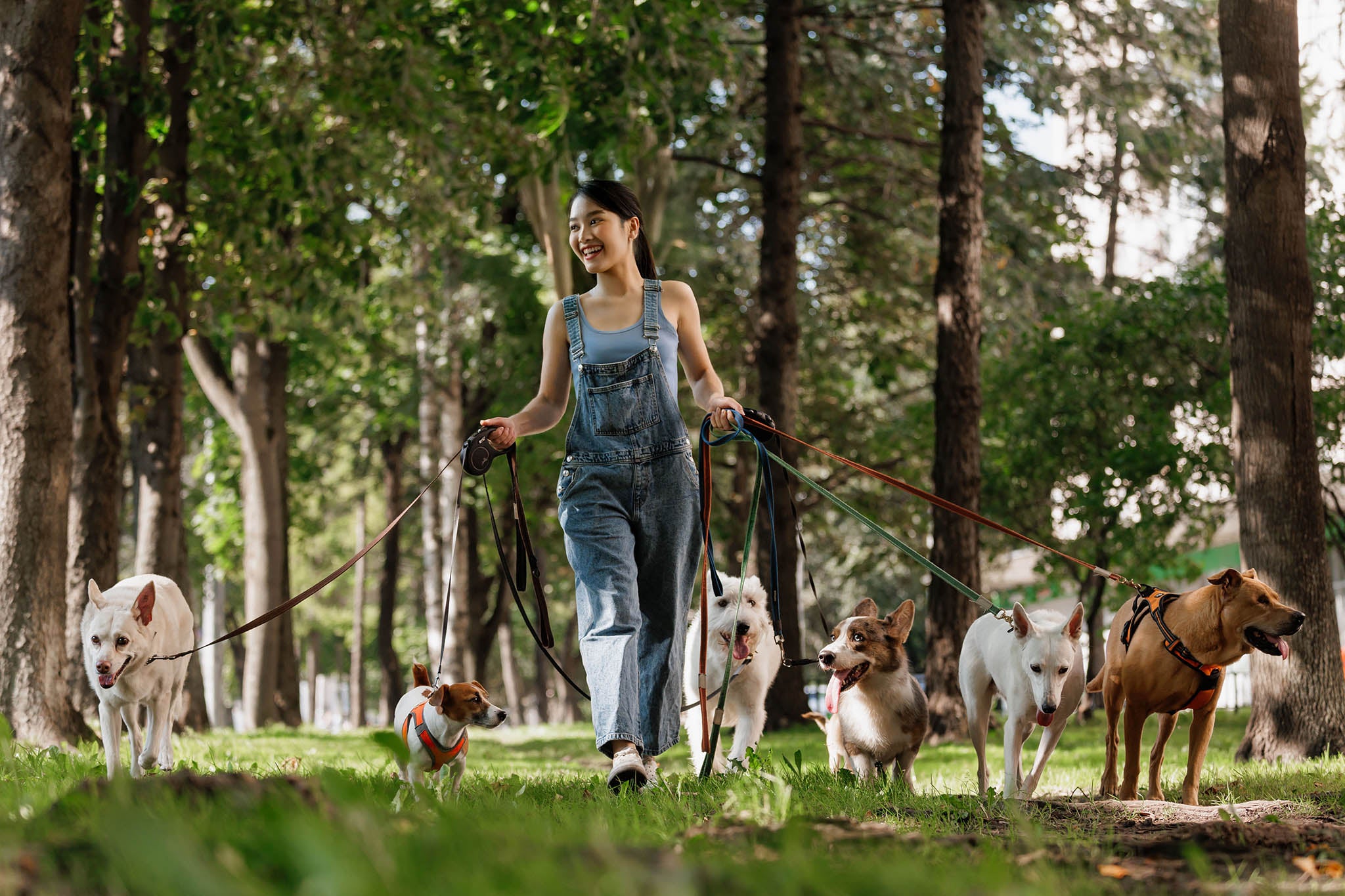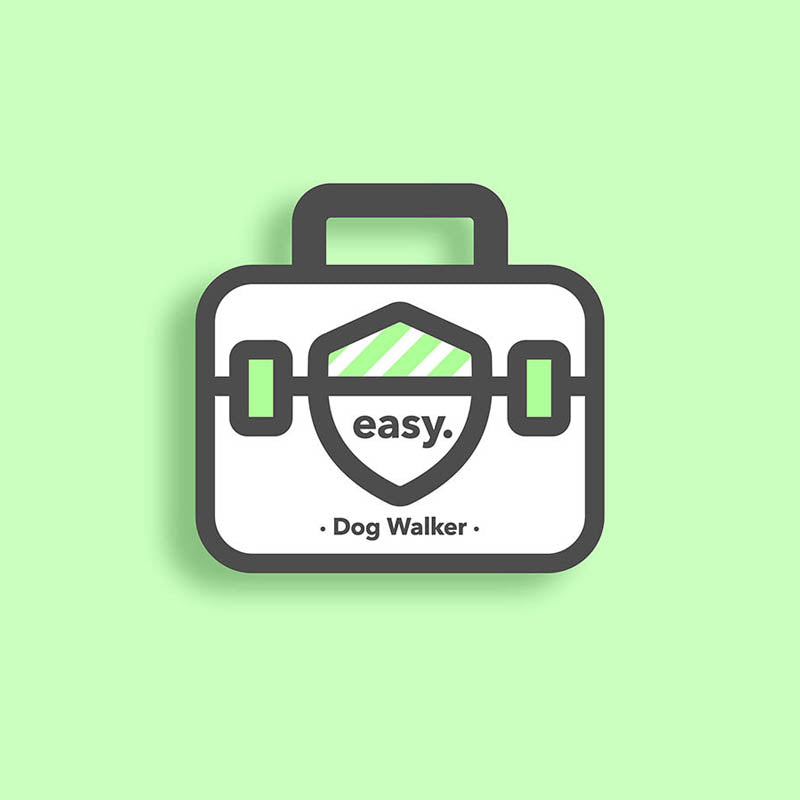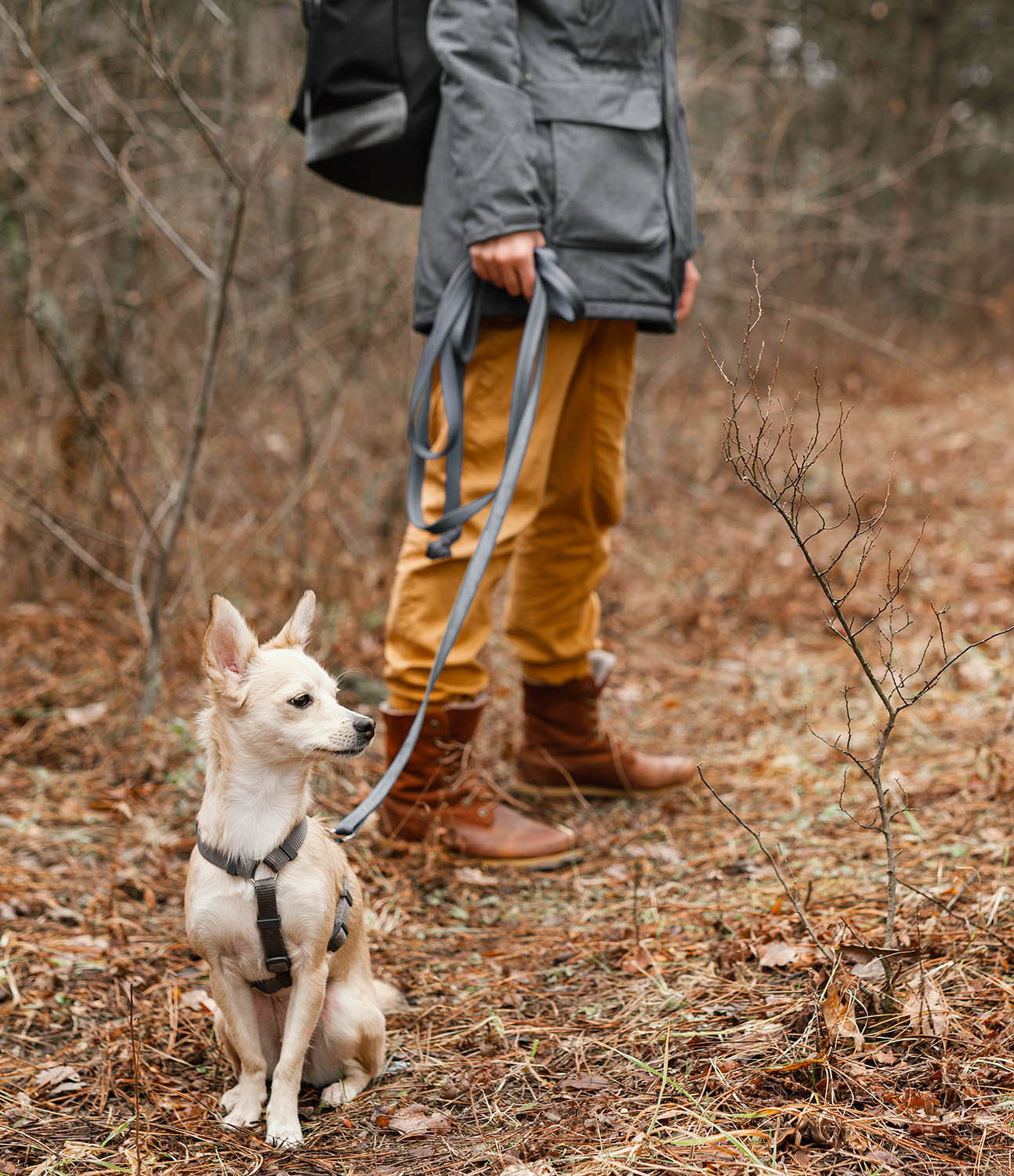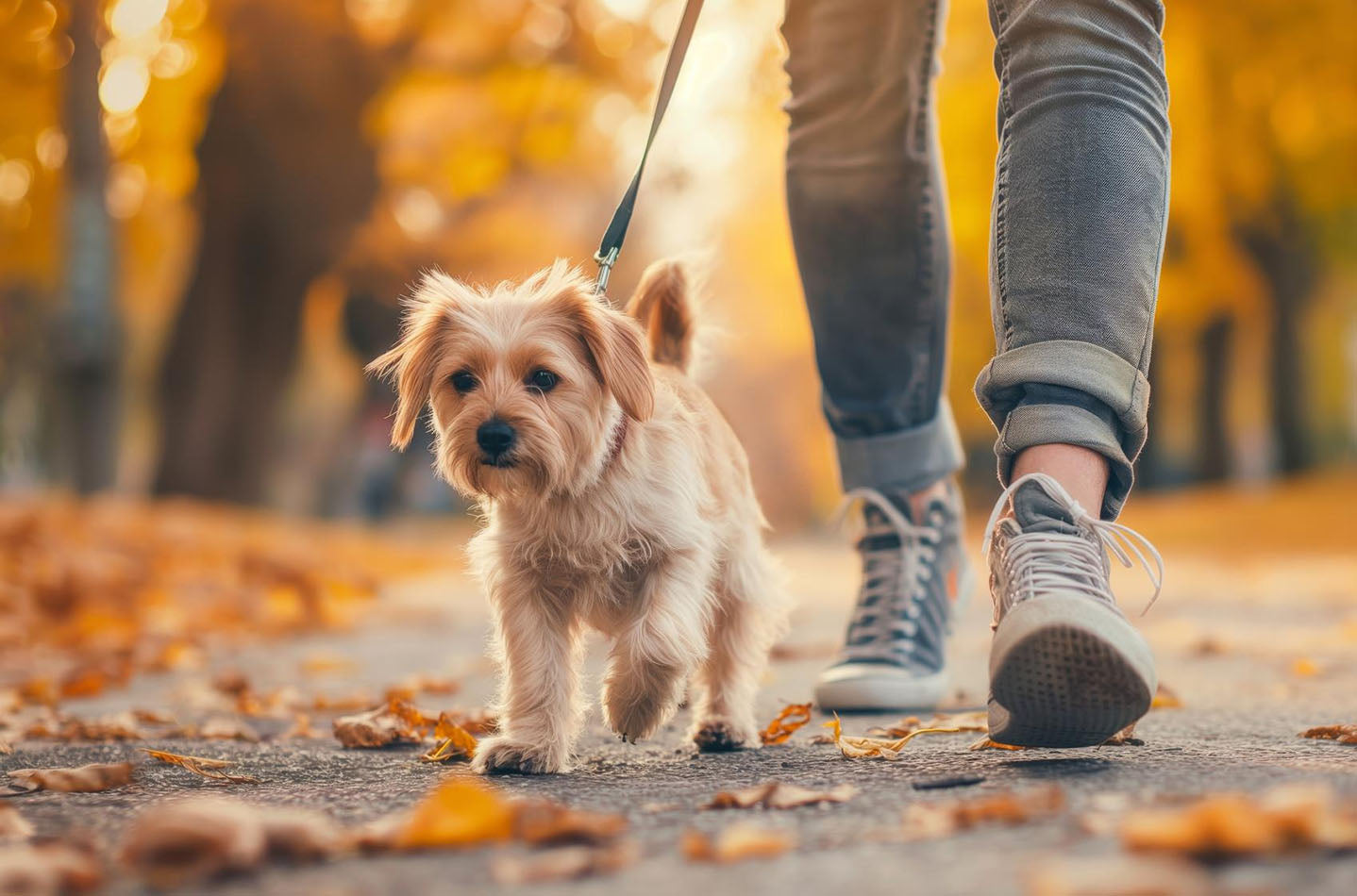
Dog Walker Health and Safety Templates & Guidance
Pre-filled, editable health and safety templates for self-employed dog walkers and small dog walking businesses — including risk assessments, policies, and compliance tools to keep your business safe and professional.

Manage Health and Safety in Your Dog Walking Business with Easy-to-Use Templates
Simplify health and safety management in your dog walking business with our professional, industry-specific templates. Whether you’re a self-employed dog walker, manage a small dog walking team, or run a growing pet care service, our editable templates help you stay compliant with health and safety requirements while protecting yourself, your team, the public, and the dogs in your care from everyday risks in outdoor working environments.
Many templates come pre-filled with detailed, dog walking–specific content — from risk assessments and health and safety policies to accident report forms, lone working procedures, vehicle safety, and staff safety guidance. This makes completion quick, accurate, and stress-free. With our ready-to-use tools, you can focus on providing excellent pet care, running your business efficiently, and keeping both clients and dogs safe while maintaining the highest standards of professionalism and compliance.

Safe Steps Forward: Navigating Health and Safety in Your Dog Walking Business
Running a dog walking business isn’t just about enjoying fresh air and wagging tails — it’s also about protecting yourself, the dogs in your care, and the public. Whether you’re self-employed or managing a small dog walking business, health and safety should always be part of your daily routine.
The Hidden Risks of Dog Walking
From unpredictable dogs and busy roads to slips, trips, and extreme weather, dog walkers face more hazards than many people realise. Walking multiple dogs at once increases risks further, while lone working can leave you vulnerable if something goes wrong. Identifying these risks early with a proper dog walking risk assessment is the first step to preventing accidents.
Health, Hygiene, and Safe Handling
Dog walkers regularly handle waste, interact with the public, and manage dogs with different temperaments. Without the right controls in place, this can lead to injuries, zoonotic illnesses, or even dog theft. A tailored health and safety policy for dog walkers ensures you’re handling animals, waste, and equipment responsibly, protecting both walkers and pets.
Why Compliance Builds Confidence
Keeping up with health and safety requirements can feel daunting, especially if you’re a sole trader or new to running a dog walking business. But having the right documents — covering dog walking risk assessments, lone working, vehicle use, and more — means you can stay compliant without reinventing the wheel each time.
Walk Safely with the Right Templates
Health and safety doesn’t have to be complicated. Our Dog Walker Health and Safety Templates give you pre-filled, easy-to-edit documents designed specifically for professional dog walkers. From risk assessments to policies, they’ll save you time, reduce stress, and help you keep your business safe, compliant, and trusted by clients.
Top 3 Health and Safety Hazards for Dog Walkers:
-

Lone Working & Personal Safety
View ProductsMany dog walkers work alone, which increases risks if they are injured, confronted by aggressive dogs, or face theft attempts. Lone workers may also experience stress or fatigue if risks aren’t properly managed. Mitigation includes carrying a charged mobile phone, having an emergency contact system, walking in well-populated areas, and using GPS tracking where appropriate. Embedding these controls into your dog walker health and safety policy supports both personal safety and client confidence.
-

Dog Behaviour & Aggression
View ProductsOne of the biggest risks in dog walking is unpredictable behaviour — from pulling on the lead to biting or aggressive reactions towards other dogs or people. These incidents can cause injuries to walkers, the public, or other animals, as well as reputational damage to your business. A dog walking risk assessment should include temperament checks, use of secure leads or muzzles where necessary, and limiting the number of dogs walked at once to maintain safe control.
-

Road Traffic & Outdoor Hazards
View ProductsBusy roads, uneven pavements, and unpredictable environments put both dogs and walkers at risk. Accidents can occur if dogs pull suddenly into traffic, or if walkers slip, trip, or fall during a walk. To reduce risks, dog walking businesses should plan safe routes, keep dogs on short leads near roads, and wear high-visibility clothing in poor light. Regularly reviewing routes as part of your dog walking health and safety procedures helps prevent accidents.

Why pay expensive consultant fees when you can manage health and safety yourself?
Improve your compliance while saving time and money by creating health and safety documents, customised to your business, yourself. Our health and safety range for dog walkers and dog walking businesses covers a suite of essential templates including health and safety policies, a dog walking risk assessment, pregnancy and young person risk assessments, health and safety guidance, accident report forms, and more.
Benefits of managing health and safety yourself...
-

Improve safety
Health and safety at work is about preventing accidents, incidents and ill-health by assessing the work environment, the activities within it, and taking appropriate action.
-

Ensure compliance
Our ready to use templates, many of which are pre-filled, will enable you to quickly increase your compliance to health and safety law.
-

Save money
With health and safety consultants often charging upwards of £400 per day, there is a better way. Take control and save yourself time and money.

Compliance Solutions for Dog Walkers
For many dog walkers and small dog walking business owners, health and safety compliance can feel like a daunting challenge. Whether managing solo walks or coordinating a small team, it’s often difficult to dedicate the time and resources needed to fully meet health and safety requirements.
While the commitment to providing a safe, professional dog walking service is always there, the practicalities — such as carrying out dog walking risk assessments, creating health and safety policies, managing lone working, ensuring vehicle safety, and handling dog waste responsibly — can be demanding. Without the right tools in place, it’s easy to overlook important details, which increases the risk of accidents, client disputes, legal issues, and reputational damage.
It’s a balancing act that highlights the critical importance of health and safety for dog walkers, no matter how small or large the business.
At easyhealthandsafety, we make compliance simple for dog walkers with ready-to-use templates and expert guidance documents — helping you stay safe, professional, and stress-free.
Frequently Asked Questions
Dog Walker Health and Safety FAQs
How can I create a risk assessment for my dog walking business?
The easiest way to create a dog walking risk assessment is to use a pre-filled, editable template designed specifically for the industry.
Writing a risk assessment from scratch can be time-consuming — especially when you’re unsure what hazards to include or how to phrase control measures. Our editable Dog Walker Risk Assessment Template takes the guesswork out of the process. It includes all key dog walking–related risks, from dog behaviour and slips or trips to lone working, zoonotic diseases, and extreme weather.
You simply review the pre-filled sections, edit them to suit your routes and working methods, and add any site-specific details. This ensures your assessment is accurate, legally compliant, and tailored to your business. Having a well-prepared risk assessment not only keeps you and the dogs you care for safe but also builds trust with clients and demonstrates that your dog walking business is run professionally and responsibly.
Do dog walkers need to complete a risk assessment?
Yes, every dog walker and dog walking business should complete a risk assessment to identify and control potential hazards.
Under health and safety regulations, employers and self-employed people are legally required to assess the risks in their work. This applies to dog walkers too — whether you work alone, employ others, or operate as part of a wider pet care service. A dog walking risk assessment helps you identify hazards such as dog behaviour, road safety, manual handling, lone working, and handling dog waste. By documenting these risks, you can put effective control measures in place to prevent accidents and injuries.
Our editable Dog Walker Risk Assessment Template makes this process quick and professional. It’s pre-filled with dog walking–specific hazards and realistic example controls, helping you stay compliant, save time, and demonstrate your commitment to safety to clients and insurers.
If your dog walking business employs five or more people, your risk assessment must be recorded in writing. However, even if you work alone or with a small team, it’s strongly recommended as a best practice measure to keep a written record. Having a documented risk assessment shows that you’ve taken your legal and moral responsibilities seriously, helps reassure clients that safety is a priority, and ensures you can review and update your controls effectively as your business grows.
What are the biggest health and safety hazards in a dog walking business?
The main hazards for dog walkers include dog behaviour, road safety, lone working, and waste handling.
Dog walking brings a range of risks that are often underestimated. Dogs can behave unpredictably, leading to bites or escapes, while busy roads increase the risk of accidents. Working alone can leave dog walkers vulnerable if they’re injured or approached by strangers, and handling dog waste carries hygiene risks.
Our Dog Walker Risk Assessment Template highlights these key hazards and provides example controls to help you manage them effectively.
What health and safety policies do dog walkers need?
Dog walking businesses with five or more staff must have a written health and safety policy, and even businesses with less staff members, such as sole traders, are strongly advised to have one as a best-practice proactive measure.
A health and safety policy sets out how you will manage health and safety within your dog walking business. While it’s a legal requirement for larger businesses, smaller dog walking businesses benefit too, as it reassures clients, shows professionalism and a commitment to safety.
Our Health and Safety Policy Template is ready-to-use, comes with pref-filled examples, and can be easily tailored to your dog walking business, saving you time and helping you stay compliant.
Are dog walkers classed as lone workers?
Yes, most dog walkers are considered lone workers because they typically work independently without nearby colleagues or immediate support.
Lone working brings additional risks that should be carefully assessed and controlled. Dog walkers may face hazards such as injury while handling large or unpredictable dogs, confrontations with members of the public, or accidents in remote areas. Without someone close by, even a minor incident can quickly become serious if help isn’t available. To manage these risks, it’s important to plan walking routes carefully, carry a fully charged mobile phone, check in regularly with someone you trust, and avoid isolated or unsafe locations.
Our Dog Walker Risk Assessment Template includes lone working as a specific hazard, with pre-filled examples of practical control measures to help you stay safe, compliant, and prepared while working independently.
How can dog walkers stay safe in bad weather?
Dog walkers should adapt routes, carry essentials, and adjust schedules during extreme weather.
Conditions such as heavy rain, snow, ice, or hot conditions all create risks for both walkers and dogs. Reducing walk times, choosing safer routes, carrying water, and wearing suitable clothing are all simple ways to stay safe.
Our Dog Walker Risk Assessment Template includes weather-related hazards and example controls, so you can plan ahead and keep your business running safely all year round.
What insurance do I need for my dog walking business?
Dog walking businesses should have public liability insurance and, if staff are employed, employer’s liability insurance.
Public liability insurance covers you if a dog in your care causes injury or damage, while employer’s liability insurance is required if you employ others. Additional cover, such as vehicle insurance or pet insurance, may also be useful depending on your services. It’s important to seek independent insurance advice to ensure you have the right level and type of cover for your specific business activities.
Supporting these policies with documents such as our Health and Safety Policy Template and Dog Walker Risk Assessment Template strengthens your compliance, professionalism, and credibility with clients and insurers.







